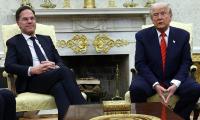Lo and behold, China has entered an era characterized by markedly slower economic growth. China's GDP growth rate has experienced a consistent descent, plummeting from 12 percent in the first quarter of 2010 to 6 percent in the fourth quarter of 2019. Over the past two years, China's average annual growth rate lingered at approximately 4.6 percent.
In tandem with this economic decline, China's working-age population—those aged 15 to 64—reached its pinnacle in 2015 and has been on a discernible decline ever since. This diminishing working-age demographic bears multifaceted repercussions, signaling an extended economic deceleration. A shrinking working-age population means an augmented dependency ratio, diminished productivity growth, and a negative impact on social security and pension systems. The implications of this demographic trend are poised to shape China's economic landscape in the coming years.
China committed a staggering $1 trillion to the Belt and Road Initiative (BRI), the most ambitious power and infrastructure project ever undertaken. Of the $1 trillion, $700 billion of the invested funds are now in distress, recipient countries not being able to pay back. Nearly four dozen nations that have received BRI loans are currently engaged in renegotiating the terms of these loans. Between 2008 and 2021, China had to dole out $240 billion in bailouts for 22 countries that were recipients of BRI funding.
China's real estate sector is undergoing a noticeable downturn, with a significant number of vacant apartments totaling a hundred million. The $13 trillion real estate financing market is confronting a daunting 90 percent default rate and estimated losses in the real estate sector are approaching $4 trillion. Local government debt has ballooned to $12.6 trillion. The banking sector finds itself in a precarious state, as banking assets totaling $57 billion reveal an underlying equity of a mere $2 trillion. Car sales are down, the tourism sector has seen a 70 percent drop and land sales are at the lowest level this century.
For the first time ever, foreign companies operating in China pulled out $100 billion in the first three quarters of 2023 because of geopolitical tensions, rising operating costs, intellectual property concerns and regulatory challenges. China's 373 billionaires are rapidly moving their money out of the country, to the tune of $75 billion every month. Youth unemployment rate has now spiked beyond 20 percent.
China's long-distance high-speed rail (HSR) is facing significant challenges on a considerable scale. Of the 18 main trunk lines only 6 lines are profitable because of insufficient ridership, cost overruns, a $2 trillion debt burden and unfavorable economic conditions. For way too long, money in China was free and losses were socialized. No more. The considerable slowdown in China could pose challenges for other Asian nations as they rely heavily on China as a key trading partner. China continues to be a key player in regional and global supply chains and Asian economies are deeply integrated into global value chains where China plays a central role in these networks.
For Pakistan, China has been a major source of foreign direct investment (FDI). A slowdown in the Chinese economy could lead to a decline in new investments and projects. Having borrowed over $30 billion from China and its banks, a deceleration in the Chinese economy could influence the terms of debt repayment, potentially posing challenges for our government. To avoid significant economic repercussions from a potential Chinese slowdown, our government must prioritize strategic interventions such as negotiating flexible debt repayments, strengthening domestic industry, diversifying trade partners and stimulating domestic investment.
A security personnel standing outside a Soneri Bank branch in this image released on July 13, 2022. —...
A woman picks a gold earring at a jewellery shop in the old quarters of Delhi, India, May 24, 2023. —...
A representational image showing a person using a mobile phone as shades of coding appear of the left side. —...
US President Donald Trump holds an executive order about tariffs increase, flanked by US Commerce Secretary Howard...
In this photo illustration a Binance logo is seen displayed with crypto coins in the foreground. — APP/FileDUBAI:...
Chinese and US flags flutter outside a company building in Shanghai, China April 14, 2021. — ReutersBEIJING: China...







